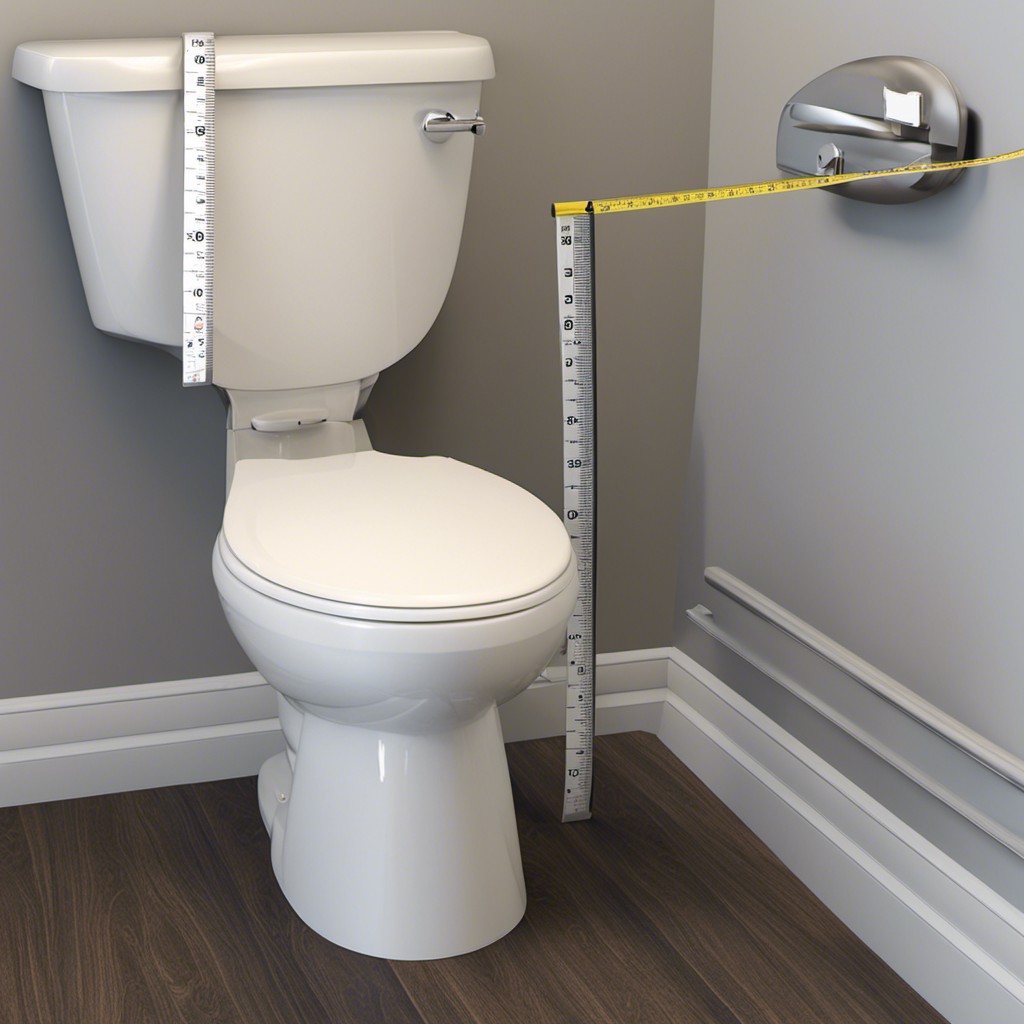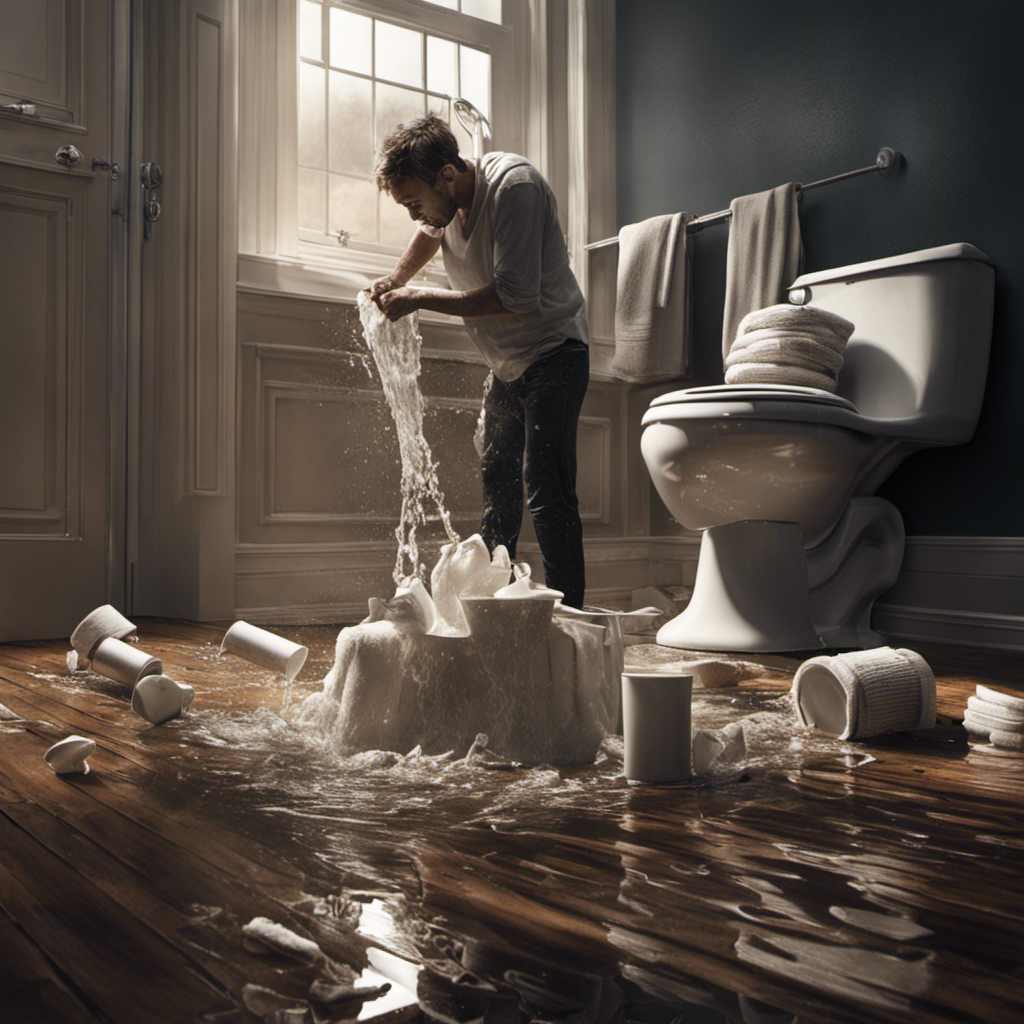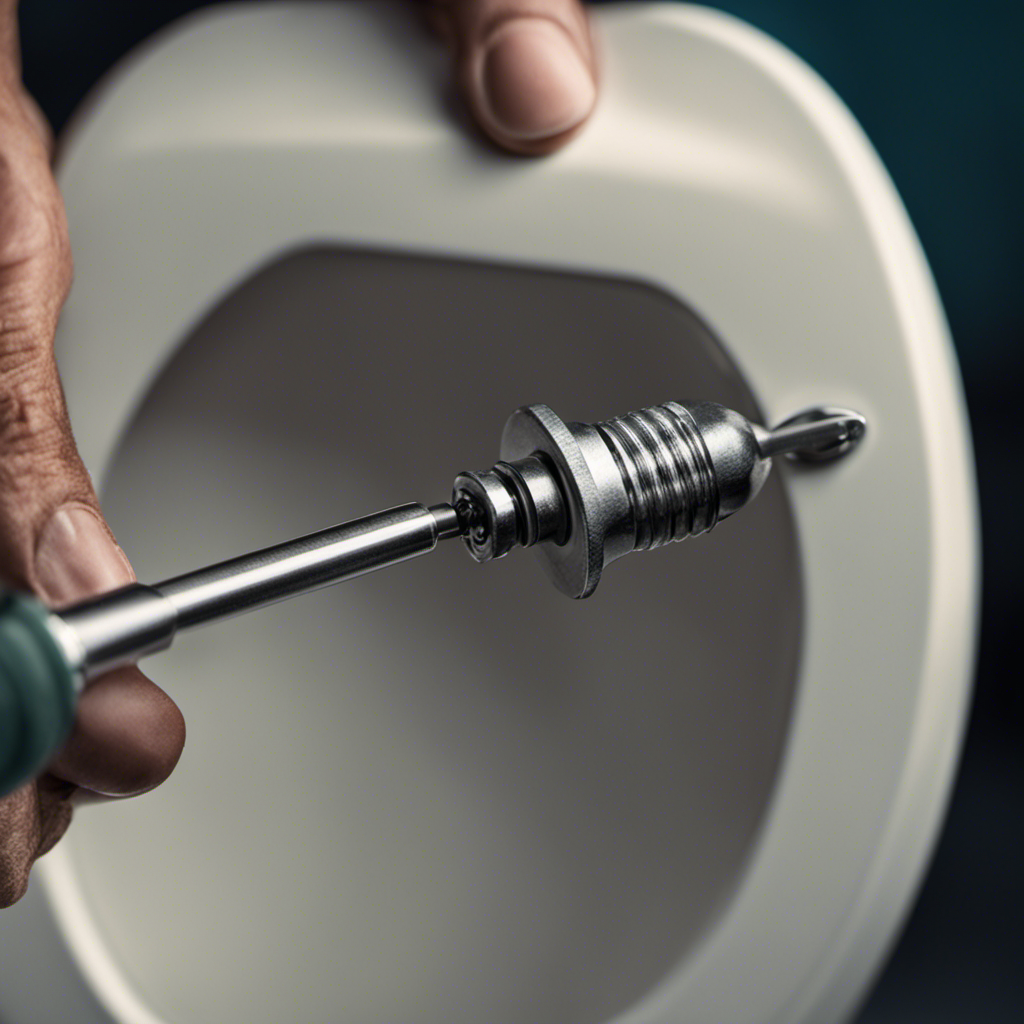Did you know that 85% of households experience a clogged toilet at some point? If you’re one of the many who have faced this frustrating issue, fear not!
I’m here to guide you through the process of plunging a toilet. In this article, I’ll explain the steps, tools, and techniques needed to unclog your toilet effectively.
By following these simple instructions, you can save yourself the hassle of calling a plumber and have your toilet back to normal in no time.
Key Takeaways
- Plunging is the most common and effective method for unclogging toilets.
- Use a good quality plunger with a rubber cup that fits securely over the drain opening.
- Position the rubber cup firmly over the drain opening to create a seal.
- Regularly maintain your drains using a drain snake to prevent future clogs.
Understanding the Plunging Process
Now you need to understand how to properly plunge the toilet.
Toilet maintenance is an important aspect of keeping your bathroom clean and functional. When it comes to unclogging techniques, plunging is the most common and effective method.
To start, make sure you have a good quality plunger with a rubber cup that fits securely over the drain opening. Next, place the plunger over the clogged area and firmly push down, creating a seal. Then, rapidly pull up and down, using the full force of your arms to generate pressure and dislodge the blockage. Repeat this motion several times until the water begins to drain properly.
Once you have mastered the plunging process, it’s time to gather the necessary tools for the next step.
Gathering the Necessary Tools
First, you’ll need to gather the necessary tools for the job.
When it comes to unclogging a toilet, there are a few alternative methods you can try before reaching for the plunger.
One of the toilet unclogging hacks is using a mixture of hot water and dish soap. Simply pour a generous amount of dish soap into the toilet bowl and follow it up with hot water. Let the mixture sit for a while and then flush to see if it has loosened the clog.
Another method is using a wire hanger. Straighten out the hanger and create a small hook at one end. Gently insert the hook into the toilet drain and try to dislodge the clog. Remember to be cautious and not push the clog further down.
These alternative methods can be effective in unclogging toilets, but if they don’t work, it’s time to bring out the trusty plunger.
Proper Plunger Technique
To effectively use the plunger, make sure you position the rubber cup firmly over the drain opening. This creates a seal that allows you to generate the necessary suction to unclog the toilet. Plunger maintenance is important to ensure its effectiveness. After each use, clean the plunger with hot water and disinfectant to remove any germs or debris. Additionally, inspect the plunger regularly for any signs of wear or damage, such as cracks or tears in the rubber cup. If necessary, replace the plunger to maintain its effectiveness. There are different types of plungers available, each designed for specific purposes. The most common type is the cup plunger, which is suitable for unclogging toilets. Another type is the flange plunger, which is specifically designed for use on sinks and drains with flat surfaces. It’s important to choose the right plunger for the job to ensure successful unclogging.
| Plunger Type | Suitable for |
|---|---|
| Cup Plunger | Toilets |
| Flange Plunger | Sinks and flat drains |
Troubleshooting Common Issues
If you’re experiencing a clog that won’t budge, try using a drain snake to dislodge the blockage. Sometimes, a plunger alone may not be enough to clear the obstruction.
Here are three potential causes for a stubborn clog and troubleshooting steps to help you resolve the issue:
-
Toilet Paper Buildup: Over time, excessive toilet paper can accumulate and cause a blockage. Use a drain snake to break up the clumps and clear the drain.
-
Foreign Objects: Children or curious pets may accidentally drop items into the toilet, causing a clog. Insert the drain snake carefully and maneuver it to remove the obstruction.
-
Hard Water Deposits: In areas with hard water, mineral deposits can accumulate and hinder proper drainage. Run the drain snake through the pipes to break down the deposits and restore flow.
Preventative Measures for Future Clogs
Regularly maintaining your drains by using a drain snake can help prevent future clogs.
Toilet maintenance is an essential part of avoiding clog recurrence. One simple way to keep your toilet flowing smoothly is by conducting regular inspections. Check for signs of buildup, such as slow draining or gurgling sounds. If you notice any issues, it’s crucial to take immediate action.
Using a drain snake is an effective method to remove stubborn clogs and prevent them from forming again. Insert the drain snake into the toilet drain and rotate it gently to break up any blockages. Pull out the snake, and you’ll likely find hair, debris, or other materials that could have caused the clog.
Frequently Asked Questions
How Long Should I Plunge the Toilet Before I Give up and Call a Plumber?
I usually try to plunge the toilet for a few minutes before calling a plumber. It’s important to avoid common mistakes like using too much force. To prevent toilet clogs, be mindful of what you flush.
Can I Use Any Type of Plunger or Does It Have to Be a Specific Kind?
Can any plunger be used, or is a specific one required? Different types of plungers vary in effectiveness. Avoid common mistakes like using too much force or not creating a proper seal.
Is It Safe to Use Chemical Drain Cleaners Before or After Plunging the Toilet?
I wouldn’t recommend using chemical drain cleaners before or after plunging the toilet. They can be effective, but their toxicity is a cause for concern. It’s best to focus on mechanical methods like plunging to avoid any potential harm.
How Often Should I Clean and Maintain My Toilet to Prevent Future Clogs?
Toilet maintenance is crucial to prevent future clogs. I’ll share my effective cleaning techniques and a toilet maintenance schedule. Regular cleaning, including scrubbing and using a toilet brush, keeps everything flowing smoothly.
Are There Any Alternative Methods to Unclog a Toilet if Plunging Doesn’t Work?
If plunging doesn’t work to unclog a toilet, you can try using a toilet auger, a tool designed to break up clogs. There are also some DIY home remedies that may help.
Conclusion
In conclusion, plunging a toilet may seem like a simple task, but it requires a proper technique and the right tools. By understanding the process and using the correct plunger, you can effectively unclog your toilet.
Remember to troubleshoot any issues that may arise and take preventative measures to avoid future clogs.
Coincidentally, this small act of plunging a toilet can serve as a metaphor for tackling challenges in life. Just as we must gather the necessary tools and use the right technique, we can overcome obstacles and find solutions.
So next time you find yourself facing a clog, remember the lessons learned from plunging a toilet.










